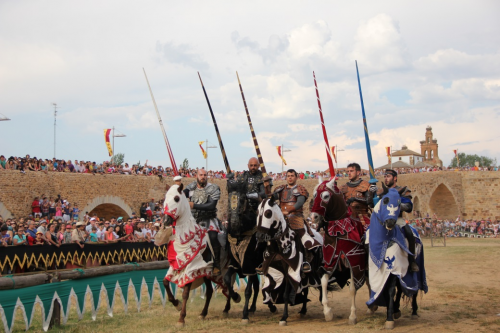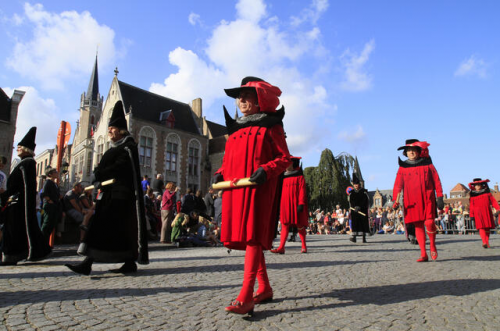Pas d’Armes and Late Medieval Chivalry: Tournament, Sport and Spectacle
The legacy of pas d'armes
The pas d’armes was a constantly evolving form of tournament which took on a different shape each time it was staged, depending on the context in which it was organised, i.e. as a standalone event by a well-known entrepreneur or as part of a bigger occasion such as a wedding. Its prestige also depended on who attended it as either a competitor, a high-ranking judge or a spectator. Finally, its particular significance depended on the function that it was meant to serve, such as being a way of bonding knights from the same court together into a fighting unit. Probably the most elaborate of all these events was the Pas held at Sandricourt in 1493 with its multiple disciplines and fighting spaces: it would continue to be a source of inspiration for later French tournaments in the 16th century for a good fifty years or more as these events became ever more lavish and ceremonious.

The pas d’armes left a lasting impression on both those who witnessed them at first hand and those who read about them generations later. One such enraptured reader was Don Quixote himself who name-checks various famous Burgundian and Castilian entrepreneurs of pas d'armes who inspired him to try and emulate - albeit unsuccessfully! - their glorious example. Although the terms pas and pas d’armes are not now in common parlance in the same way that ‘tournament’ or ‘joust’ are, the actual events themselves have certainly not been forgotten in the modern era. As the regular large-scale re-enactments of events such as the Castilian Paso Honroso (above) and the Burgundian Pas de l’Arbre d’or (below) go to show, this type of spectacular ritualised tournament continues to be a source of wonder and fascination for all sorts of people today.

Long live the pas d'armes !